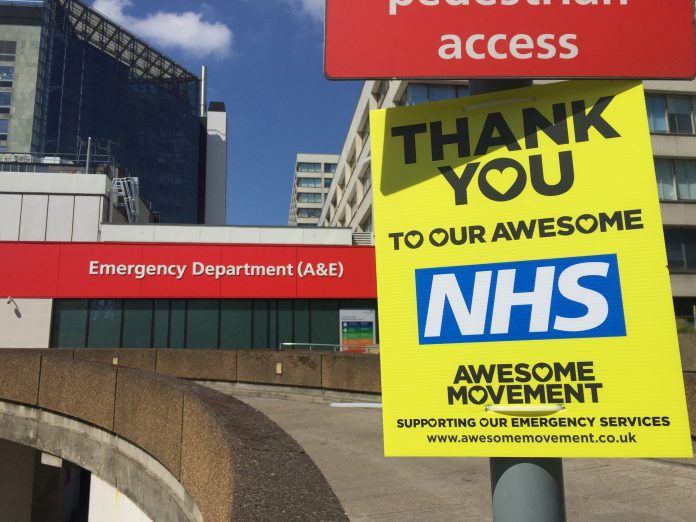Dr Anas Nader, CEO at Patchwork Health explains why healthcare providers must make greater efforts to gather, analyse and act upon data blind spots to drive change post-COVID-19
‘Data’ is a word overused to the point of losing all meaning. We worry about which international agencies are surreptitiously harvesting our ‘personal data’, we praise the AI-driven application of ‘Big Data’ which is making our lives easier, and we hear politicians trying to derive legitimacy by claiming that their decisions are ‘guided by the data’. But does this translate into something meaningful?
Beneath the rhetoric, data is simply information (facts, numbers and statistics) which has been collected. In a world which is chronically unpredictable and constantly in flux, data can be used as a reference point to guide decision making across numerous contexts.
Of course, the processes which are involved in gathering and understanding different kinds of data can be complex and are often contested. And this means many people are not only mistrustful of ‘data-backed’ claims, but also afraid of the immense power wielded by those who have access to it.
Putting discomfiture aside, it’s now commonly accepted that data-driven decision making is the gold standard when it comes to good business practice. However, from my experience working within the UK’s healthcare system, I know that when it comes to making important decisions at all levels of the organisation, reference to robust data can sometimes be cursory or entirely non-existent. This data blindness is a problem and one which needs to be addressed with urgency.
Social care
In the UK, the health and social care sectors employ one in every 10 working people and are accessed by over 30 million people on a daily basis. The sheer quantity of data which is generated at every moment is phenomenal and has the potential to be an incredible resource to drive improvements in service. So what is standing in the way?
Well, data cannot be analysed nor utilised if it is not properly gathered in the first place – a task easier said than done. Every second, countless data points are generated organically within the health and social care system. These include the number of patients arriving at an A&E department, the percentage of ward staff taking a day off due to illness, or the length of time it takes a blood sample to reach the lab for analysis. However, only a fraction of these events are captured and recorded in a meaningful way, with swathes of valuable information evading scrutiny.
Technology
If any of these data points are to be harnessed to drive positive change, appropriate digital technologies must be sought out and applied consistently. Proactively seeking partnerships with external tech companies and recruiting the brightest talent will free up internal administrators, managers and doctors to do the jobs they are trained for, saving valuable time and significant sums of money.
Hand in hand with this cutting-edge data collection technology, decision-makers must be equipped with the skills to interpret and apply data insights to achieve clearly defined, measurable goals. Identifying trends and using this knowledge to underpin informed decision making is the holy grail of the data-devotee, but this is an advanced skill which necessitates a targeted education programme. Funding must be allocated to facilitate the training and development of informed decision-makers at all levels of the healthcare system.
Distributing and collecting data
And finally, there must be radical visibility and scaled-up distribution of both the collected data and the actionable insights. If information is power, this power must be equitably shared across the entire domain of health and social care, from the GP surgeries to the ambulance stations to the operating theatres. Opening the channels of communication to share information will take the guesswork out of managing patient demand, refine referral pathways and help with the elimination of clinical error.
If you remain unconvinced as to the urgency of putting data at the heart of public healthcare, consider these additional justifications for the investment. If we want to keep hospital bed occupancy below capacity, we need access to the data which will reveal exactly where the friction points in the community care system are. If we want to prevent long waits in A&E, we must understand why patients are attending and where they are coming from, so that we can divert them to more appropriate services wherever possible. And, if we want to ensure that safe staffing levels are constantly upheld on hospital wards, managers need access to data which delivers visibility over the ‘problem’ shifts and real-time insight into sudden demand peaks.
The NHS has delivered an incredible and praiseworthy response to the biggest health emergency of our generation, but one can’t help but wonder how things might have been different if the system’s monitoring and response had been underpinned by a comprehensive and accessible bank of data. Now, as providers play post-lockdown catch-up and make valiant efforts to prepare for a potential second wave, it’s never been more pressing that we empower decision-makers to cut through the bias and the preconceived notions with the right tech-backed tools. Let’s fix our sights on a future in which appropriate use of data delivers 20:20 vision to our treasured healthcare system, driving the best possible outcomes for patients and staff members alike.











